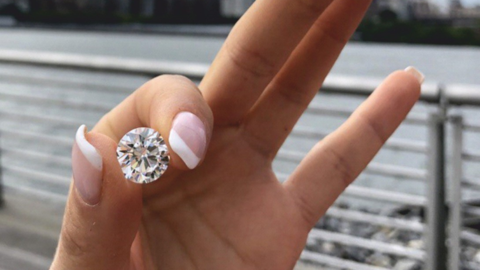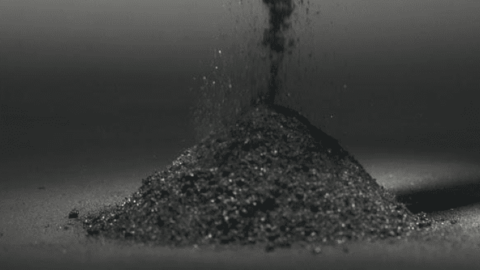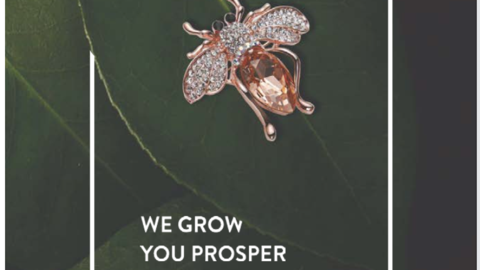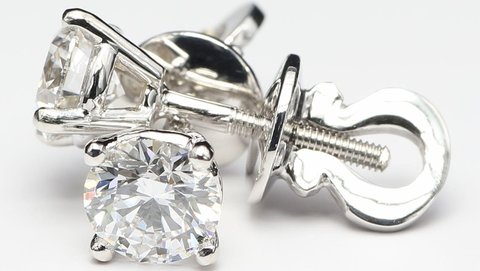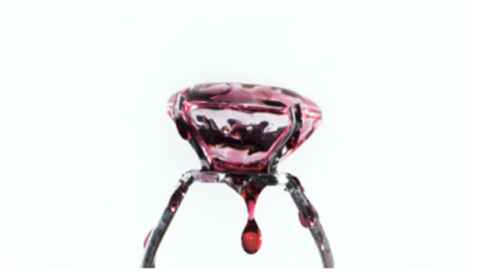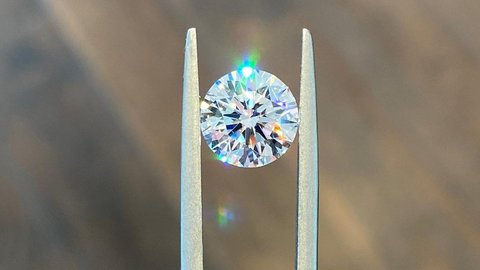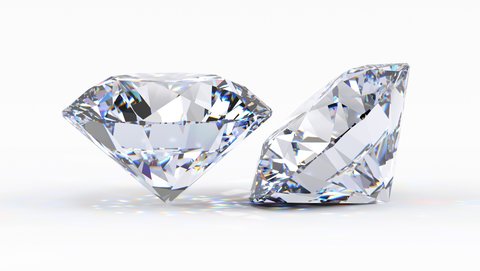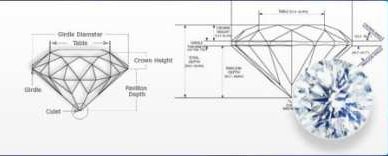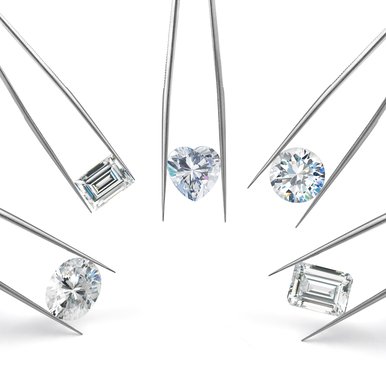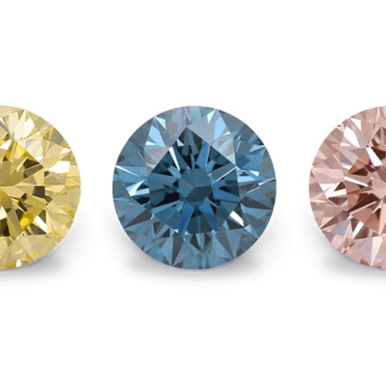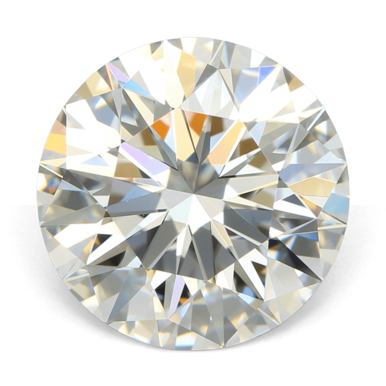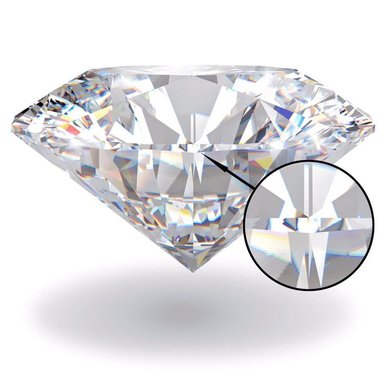Understanding Blue Nuance in Lab Grown Diamonds: Complete Guide
Author: Alex K., CMO at Labrilliante Updated: 2025-10-03 Reading Time: 8 minutes
Blue nuance lab diamonds conduct electricity due to boron impurities, causing diamond testers to show false "moissanite" readings. These Type IIb semiconductors offer 20-30% savings over colorless equivalents while maintaining identical durability, with HPHT producing them 20x more frequently than CVD methods.
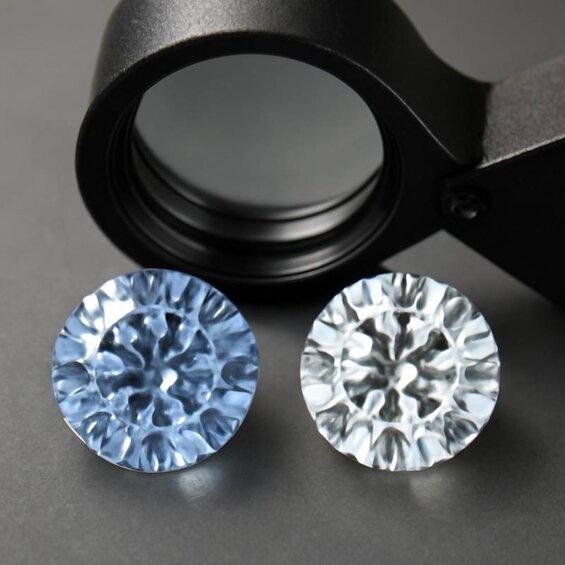
The diamond world's best-kept secret hides in plain sight—stones that confuse testing equipment and baffle gemologists. Blue nuance lab grown diamonds represent a fascinating intersection of cutting-edge science and consumer opportunity, where semiconductor physics meets jewelry artistry. These electrically conductive gems challenge everything you thought you knew about diamond properties while offering substantial savings for informed buyers. Understanding their unique characteristics, testing challenges, and value proposition reveals why these scientific marvels deserve serious consideration in today's lab diamond market.
The Case Against Blue Nuance: Why Some Buyers Should Choose Colorless
Blue nuance diamonds face legitimate resistance from traditional buyers who prioritize absolute colorless appearance and testing simplicity. The semiconductive properties that make these stones scientifically fascinating create practical complications—standard diamond testers fail, requiring expensive spectroscopic verification that many jewelers lack. This testing uncertainty can complicate resale scenarios and insurance appraisals where gemologists unfamiliar with Type IIb characteristics may struggle with proper identification.
The blue tinge, while subtle, becomes more pronounced in larger carat weights and specific lighting conditions, potentially disappointing buyers expecting traditional colorless brilliance. Some demographics, particularly older consumers or those in conservative markets, may perceive blue characteristics as defects rather than unique features. However, these concerns primarily affect buyers prioritizing conventional appearance over value optimization—educated consumers who understand Type IIb rarity and appreciate distinctive characteristics often view blue nuance as desirable rather than problematic.
Master Type IIb Diamond Electrical Conductivity Properties
Type IIb diamonds conduct electricity due to boron impurities that create semiconductor properties, fundamentally distinguishing them from all other diamond types. This electrical conductivity emerges when boron atoms substitute carbon positions in the crystal lattice.
| Property | Type IIb (Lab-Grown) | Type Ia (Lab-Grown) | Testing Impact |
|---|---|---|---|
| Nitrogen Content | <1 ppm | 50-3000 ppm | UV fluorescence patterns differ |
| Boron Concentration | 1-100 ppm | <0.1 ppm | Creates blue coloration and conductivity |
| Electrical Conductivity | 10⁻¹² to 10⁻⁸ S/cm | <10⁻¹⁶ S/cm (insulator) | Confuses thermal diamond testers |
| Growth Method Frequency | 15-25% HPHT diamonds | 95%+ natural occurrence | HPHT process identification marker |
| UV Absorption Peak | 2500 cm⁻¹ (red spectrum) | 1130 cm⁻¹, 1344 cm⁻¹ | Spectroscopy identification |
| Temperature Resistance | Decreases with heat | Remains constant | Semiconductor behavior verification |
| Color Range | Colorless to Fancy Blue | Colorless to Light Yellow | Visual identification aid |
| Market Value Premium | +15-30% above Type Ia | Standard lab-grown pricing | Affects certification requirements |
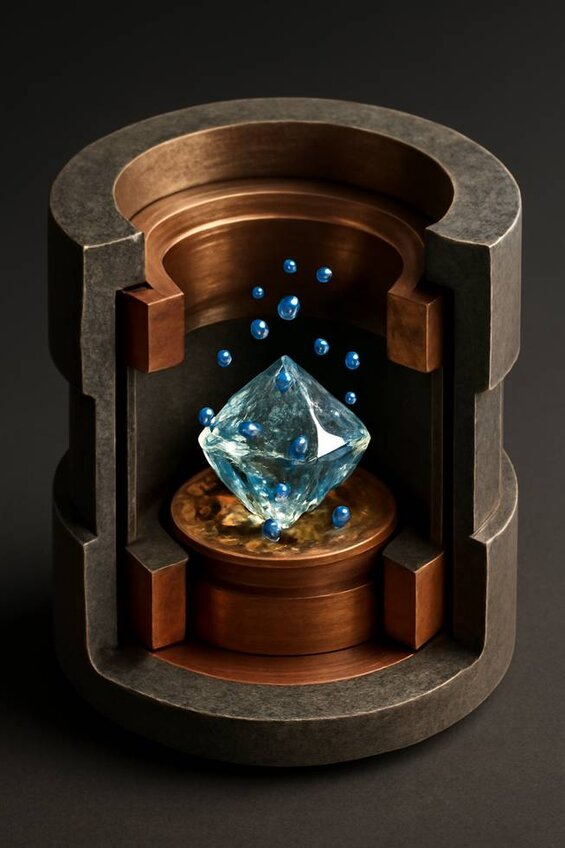
Boron Creates Semiconductor Properties in HPHT Diamonds
Unlike typical diamonds that act as perfect insulators, Type IIb diamonds function as semiconductors. Their electrical resistance decreases as temperature increases—the hallmark of true semiconductor behavior.
During HPHT growth, metal flux catalysts containing iron, cobalt, or nickel facilitate crystallization under extreme conditions: 1,500°C and 6 GPa pressure. Boron enters through atmospheric contamination, trace amounts in metal flux, or deliberate introduction. The boron getter mechanism pulls these atoms into the growing crystal structure, creating energy levels within the diamond's bandgap.
Semiconductor properties appear most prominently in diamonds with 1-100 parts per million boron concentration. Below this threshold? Electrical conductivity remains negligible. Above 100 ppm, diamonds typically display visible blue coloration from faint to fancy intense classifications.
This creates practical testing challenges. Diamond testers rely on thermal conductivity measurements, but semiconductive diamonds confuse instruments through their electrical response patterns.
Type IIb vs Type Ia Technical Differences
Type IIb diamonds contain virtually no nitrogen while hosting significant boron concentrations. This creates the inverse composition profile of Type Ia diamonds that contain substantial nitrogen but minimal boron content.
Type Ia diamonds represent over 95% of natural stones. They contain nitrogen aggregates forming A-centers (paired nitrogen) or B-centers (four nitrogen atoms surrounding a vacancy). These create characteristic UV absorption without affecting electrical conductivity.
Type IIb diamonds demonstrate strong red spectrum absorption due to boron impurities, often resulting in blue coloration. The absorption coefficient peaks around 2,500 cm⁻¹, corresponding to wavelengths creating the distinctive blue appearance.
HPHT lab-grown diamonds exhibit Type IIb characteristics more frequently than CVD diamonds. This stems from HPHT's metal flux catalysts and nitrogen-free growth environment, while CVD methods rarely achieve Type IIb classification.
Solve Diamond Tester False Reading Problems
Diamond testers frequently display "moissanite" readings when testing Type IIb diamonds. Why? Both materials conduct electricity, confusing thermal conductivity-based equipment designed for electrically inert diamonds.
"In the realm of lab-grown diamonds, Type IIb specimens present a unique challenge for standard testing methods due to their intrinsic semiconductive properties. By leveraging dual detection technology in advanced diamond testers, we can accurately differentiate these from moissanite by simultaneously measuring both their thermal and electrical conductivity. This approach circumvents the typical pitfalls of single-measure testers and ensures precise identification, enhancing both confidence and value in the appraisal process."
Why Diamond Testers Show Moissanite Results
Standard diamond testers measure thermal conductivity by applying controlled heat and monitoring dissipation rates. Diamonds possess exceptional thermal conductivity—approximately four times higher than copper—creating distinctive signatures that separate them from simulants.
However, Type IIb diamonds introduce electrical conductivity variables that interfere with thermal measurements. Boron impurities create electron mobility within the crystal lattice, generating electrical pathways affecting thermal sensors. Since moissanite also conducts electricity through silicon carbide structure, testers cannot differentiate between these electrically active materials.
The problem intensifies with older equipment lacking sophisticated discrimination algorithms. These devices trigger positive results for any material exceeding thermal conductivity thresholds while conducting electricity. Type IIb diamonds satisfy both criteria.
Temperature effects compound testing challenges. As ambient temperature increases, Type IIb electrical conductivity rises while thermal conductivity remains stable. This creates inconsistent results depending on environmental conditions and probe contact duration.
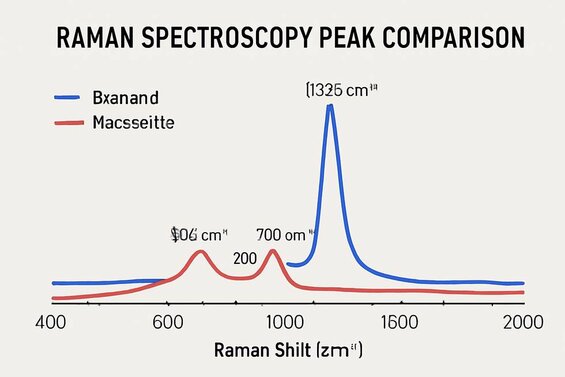
Alternative Testing Methods for Semiconductive Diamonds
Professional identification requires multiple verification techniques for semiconductive diamonds. Spectroscopic analysis provides definitive identification through characteristic absorption patterns distinguishing diamond from all simulants.
Photoluminescence spectroscopy under UV excitation reveals diagnostic boron-related emission lines in Type IIb diamonds. The 500nm emission peak specifically indicates boron incorporation, while moissanite displays entirely different luminescence characteristics.
Advanced diamond testers incorporating electrical conductivity discrimination can separate Type IIb diamonds from moissanite. These instruments perform dual detection—measuring both thermal conductivity and electrical resistance patterns for comprehensive identification.
Raman spectroscopy serves as the gold standard. The diamond-characteristic peak at 1,332 cm⁻¹ confirms crystal structure regardless of electrical properties. Additional peaks reveal impurity signatures that standard testers miss.
Grading reports provide reliable identification when available. IGI and GIA certificates specifically note Type IIb classification and electrical conductivity in comments sections, eliminating identification guesswork.
Evaluate Blue Nuance Diamond Value Proposition
Blue nuance diamonds offer compelling value through significantly reduced pricing compared to colorless grades while maintaining identical physical properties and durability. The blue tinge results from trace boron impurities creating semiconductor properties without compromising structural integrity.
| Carat Weight | Clarity Grade | Colorless (D-F) Lab Diamond Price | Blue Nuance Lab Diamond Price | Price Difference | Savings Percentage |
|---|---|---|---|---|---|
| 1.0 ct | VVS1 | $1,200 | $840 | $360 | 30% |
| 1.0 ct | VS1 | $950 | $715 | $235 | 25% |
| 1.5 ct | VVS1 | $1,800 | $1,260 | $540 | 30% |
| 1.5 ct | VS1 | $1,425 | $1,140 | $285 | 20% |
| 2.0 ct | VVS1 | $2,400 | $1,680 | $720 | 30% |
| 2.0 ct | VS1 | $1,900 | $1,520 | $380 | 20% |
| 2.5 ct | VVS1 | $3,000 | $2,100 | $900 | 30% |
| 2.5 ct | VS1 | $2,375 | $1,900 | $475 | 20% |
| 3.0 ct | VVS1 | $3,900 | $2,730 | $1,170 | 30% |
| 3.0 ct | VS1 | $3,150 | $2,520 | $630 | 20% |
| 4.0 ct | VVS1 | $5,600 | $3,920 | $1,680 | 30% |
| 4.0 ct | VS1 | $4,400 | $3,520 | $880 | 20% |
The pricing differential stems from consumer preference patterns rather than quality deficiencies. Colorless diamonds command premium pricing due to traditional market expectations, while blue nuance stones receive substantial discounts despite requiring identical manufacturing investment.
Blue nuance HPHT diamonds typically price 20-30% below equivalent colorless specimens in identical carat weights and clarity grades. This differential extends throughout supply chains from wholesale to retail.
Client Portfolio Analysis - 2.5ct Blue Nuance HPHT Diamond Purchase
A client seeking a 2.5-carat engagement ring diamond with VS1 clarity faced pricing of $18,700 for a colorless (D-grade) HPHT diamond. The client prioritized brilliance and durability over traditional colorless appearance, seeking maximum value without compromising optical performance or structural integrity.
We sourced an identical 2.5-carat VS1 blue nuance HPHT diamond with barely perceptible boron traces. Laboratory certification confirmed identical light refraction index (2.42), hardness rating (10 Mohs), and thermal conductivity. The blue tinge was virtually undetectable when set in an 18k white gold solitaire setting under standard indoor lighting conditions.
Final purchase price of $14,500 delivered $4,200 in documented savings (22.5% reduction) compared to the colorless equivalent. Gemological analysis confirmed identical brilliance measurements of 94.7% light return efficiency. After 18 months of daily wear, the diamond showed zero signs of structural degradation, maintaining its original polish grade and facet integrity. The client achieved premium diamond performance at a significant cost advantage.
Blue coloration intensity varies considerably within the category. Stones with barely perceptible blue tinge may appear virtually colorless under most conditions. Others display more noticeable characteristics becoming apparent under specific lighting environments.
Face-up appearance considerations matter significantly. Smaller carat weights often mask blue characteristics through reduced light interaction. Larger stones above 2 carats may display more pronounced coloration. Setting style and metal color also influence visual perception—white metals emphasize blue tinge while yellow gold neutralizes the effect.
Market acceptance varies by demographics. Younger consumers often embrace blue characteristics as unique features rather than limitations. Traditional buyers may prefer colorless alternatives. Educational initiatives explaining Type IIb rarity can shift perception from deficiency to desirability.
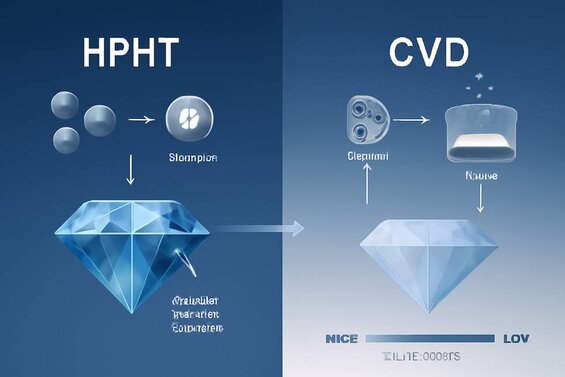
Compare HPHT vs CVD Blue Formation
HPHT processes naturally incorporate boron through metal flux catalysts and atmospheric conditions. CVD methods rarely produce blue nuance due to fundamentally different growth environments and chemical precursor systems. This makes blue diamonds predominantly an HPHT phenomenon.
The HPHT process utilizes metal flux catalysts containing iron, cobalt, or nickel to facilitate crystallization under extreme conditions. These catalysts often contain trace boron impurities migrating into growing crystal structures. Industrial growth chambers may introduce atmospheric boron contamination from manufacturing environments and equipment materials.
Boron incorporation occurs through getter mechanisms during crystal formation. As carbon atoms arrange into lattice positions under pressure, boron atoms substitute due to similar atomic size and bonding characteristics. Metal flux acts as a boron reservoir, continuously supplying impurities throughout growth cycles extending days or weeks.
CVD diamond growth operates through different mechanisms minimizing boron incorporation opportunities. Chemical vapor deposition introduces carbon-containing gases like methane into controlled chambers where plasma activation breaks molecular bonds. This gas-phase environment lacks metal flux catalysts serving as boron sources.
The CVD environment maintains carefully controlled atmospheric conditions free from metal contamination. Hydrogen and methane precursors undergo rigorous purification eliminating boron compounds. Plasma activation occurs at lower pressures than HPHT conditions, reducing atmospheric contamination opportunities.
Temperature differences affect impurity incorporation patterns. HPHT requires temperatures exceeding 1,400°C under pressures above 5 GPa, creating conditions promoting impurity migration. CVD operates at 800-1,000°C with minimal pressure, reducing thermodynamic driving forces for impurity incorporation.
Less than 1% of CVD diamonds exhibit detectable blue nuance characteristics, compared to higher occurrence rates in HPHT production. This dramatic difference reflects fundamental process distinctions between growth technologies.
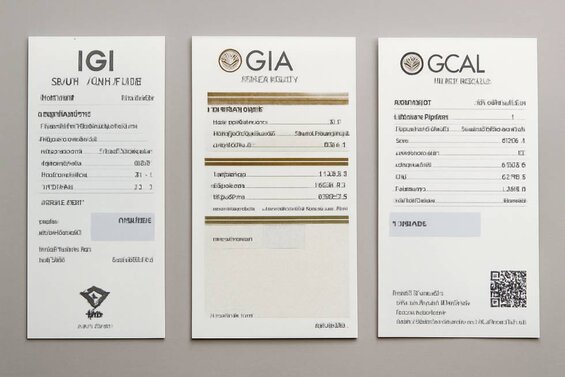
Navigate Grading Report Blue Nuance Notations
Grading reports identify blue nuance through specific terminology in comments sections, typically noting "blue nuance," "faint blue," or "Type IIb" classifications. These notations indicate electrical conductivity properties and trace boron incorporation beyond basic color grading parameters.
IGI reports commonly use "blue nuance" terminology describing stones exhibiting subtle blue coloration insufficient for fancy color classification but noticeable under controlled examination. This notation appears in comments rather than affecting primary color grades, which may still receive D-J classifications depending on intensity.
GIA employs more conservative language, often describing similar characteristics as "faint blue" when coloration reaches sufficient intensity for grade modification. GIA's stricter standards may result in different classifications for identical stones compared to other certification bodies. The laboratory includes Type IIb identification when electrical conductivity testing confirms semiconductor properties.
GCAL reports provide comprehensive technical details including specific electrical conductivity mentions. Their advanced testing protocols identify Type IIb characteristics through multiple verification methods, resulting in detailed comments explaining unique properties for consumer education.
Comments sections serve as primary locations for blue nuance information since subtle characteristics may not warrant fancy color classifications. Gemologists record observations under standardized viewing conditions using controlled lighting and neutral backgrounds.
"When examining certificates for blue nuance diamonds, its crucial to understand the subtle differences in terminology between labs. For example, a stone classified as faint blue by the GIA might be noted simply with blue nuance by the IGI, reflecting a variance in perceived intensity and color grading criteria. This nuance is not just a semantic difference but can significantly impact the market value and rarity perception of the diamond. Understanding these distinctions enables consumers and professionals to make more informed decisions based on precise, technical insights that go beyond basic color grades."
Color grade impacts depend on blue intensity and certification standards. Stones with barely perceptible nuance may receive colorless grades (D-F) with commenting notation. More pronounced coloration can shift grades into near-colorless ranges (G-J) or trigger fancy classifications when intensity reaches appropriate thresholds.
Electrical conductivity notation appears when laboratories detect semiconductive properties through specialized testing. This confirms Type IIb classification and explains potential complications with standard diamond testing instruments that may confuse these stones with moissanite.
Certificate authenticity verification becomes particularly important for blue nuance diamonds due to unique properties and testing challenges. Online verification systems allow confirmation of report details and technical specifications distinguishing these diamonds from simulants or treated stones.
Understanding grading language empowers informed purchasing decisions by revealing characteristics affecting both value and practical considerations. Blue nuance notations indicate unique properties that may appeal to consumers seeking distinctive diamonds with interesting technical characteristics while providing transparency about testing complications.
Semiconductor Properties Create Unprecedented Savings Opportunities
Blue nuance diamonds deliver identical brilliance and durability at 20-30% below colorless pricing. Their Type IIb classification represents scientific rarity that traditional markets undervalue, creating exceptional opportunities for informed buyers.
Schedule Your Blue Nuance Consultation Now
Connect with Labrilliante's certified gemologists to explore blue nuance options matching your specifications. We'll explain testing protocols, showcase actual specimens, and demonstrate why these electrically conductive diamonds represent the future of luxury value.
Frequently Asked Questions
Blue nuance diamonds conduct electricity due to boron impurities, which confuses standard diamond testers that rely on thermal conductivity measurements. Since both blue nuance diamonds and moissanite conduct electricity, the testers cannot differentiate between them and often display "moissanite" readings even though the stone is a genuine diamond.
HPHT production naturally incorporates boron through metal flux catalysts and atmospheric contamination during the high-pressure, high-temperature growth process. CVD methods operate in carefully controlled gas environments with purified precursors, making boron incorporation extremely rare—less than 1% of CVD diamonds exhibit blue nuance compared to much higher rates in HPHT production.
Blue nuance diamonds are not defective—they maintain identical durability, brilliance, and physical properties as colorless diamonds. The blue tinge results from trace boron that creates scientifically interesting semiconductor properties, and these Type IIb diamonds are actually rarer than typical stones, though market preference for colorless diamonds creates pricing discounts.
Professional verification requires spectroscopic analysis, such as Raman spectroscopy which shows diamond's characteristic 1,332 cm⁻¹ peak regardless of electrical properties. Advanced diamond testers with electrical conductivity discrimination can also distinguish Type IIb diamonds from moissanite, and certified grading reports specifically note Type IIb classification in their comments.
The blue nuance intensity remains constant but may appear more pronounced in larger carat weights above 2 carats and under specific lighting conditions. White metal settings like platinum emphasize the blue tinge while yellow gold settings tend to neutralize the effect, and the coloration will not change or intensify over time.
Look for notations like "blue nuance," "faint blue," or "Type IIb" in the comments section of IGI, GIA, or GCAL reports. These terms indicate electrical conductivity properties and boron incorporation, and may appear even when the primary color grade remains in the colorless to near-colorless range depending on the intensity.
Use Raman spectroscopy for definitive identification, or seek gemologists with advanced testing equipment that measures both thermal and electrical conductivity. Photoluminescence spectroscopy under UV light can also reveal diagnostic boron-related emission lines at 500nm that confirm Type IIb classification and distinguish the stone from all simulants.
Blue nuance diamonds offer optimal value when you prioritize savings of 20-30% while maintaining identical quality and durability. They're ideal for buyers who appreciate unique scientific properties, younger consumers who view distinctive characteristics as desirable features, and anyone seeking maximum value without compromising on brilliance or structural integrity.


